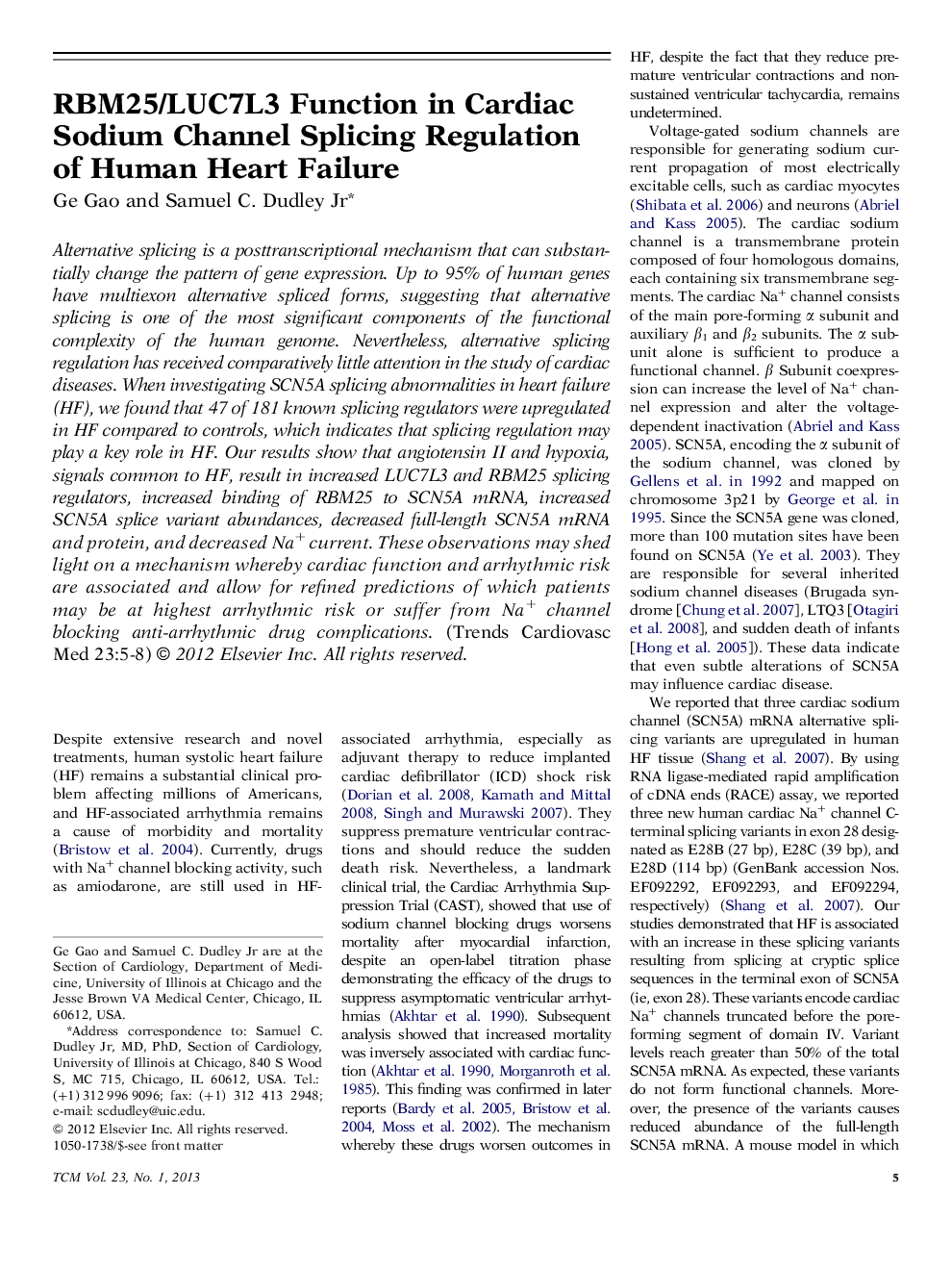| Article ID | Journal | Published Year | Pages | File Type |
|---|---|---|---|---|
| 3030561 | Trends in Cardiovascular Medicine | 2013 | 4 Pages |
Alternative splicing is a posttranscriptional mechanism that can substantially change the pattern of gene expression. Up to 95% of human genes have multiexon alternative spliced forms, suggesting that alternative splicing is one of the most significant components of the functional complexity of the human genome. Nevertheless, alternative splicing regulation has received comparatively little attention in the study of cardiac diseases. When investigating SCN5A splicing abnormalities in heart failure (HF), we found that 47 of 181 known splicing regulators were upregulated in HF compared to controls, which indicates that splicing regulation may play a key role in HF. Our results show that angiotensin II and hypoxia, signals common to HF, result in increased LUC7L3 and RBM25 splicing regulators, increased binding of RBM25 to SCN5A mRNA, increased SCN5A splice variant abundances, decreased full-length SCN5A mRNA and protein, and decreased Na+ current. These observations may shed light on a mechanism whereby cardiac function and arrhythmic risk are associated and allow for refined predictions of which patients may be at highest arrhythmic risk or suffer from Na+ channel blocking anti-arrhythmic drug complications.
